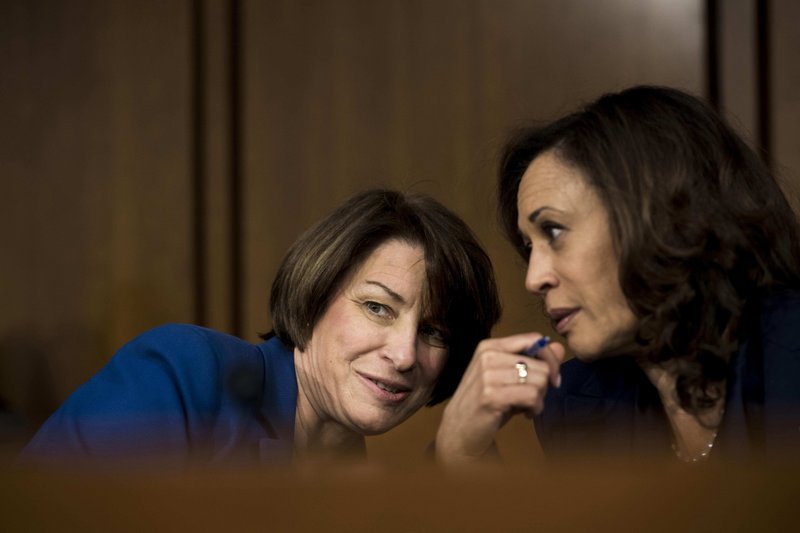The parade of possible 2020 Democratic presidential candidates is underway. They now seem to come in batches.
Sen. Kirsten Gillibrand (D-N.Y.)--once a Blue Dog congresswoman, now a progressive with a gender-focused message--announced her candidacy on Tuesday. If the Democratic Party is looking for a female senator from New York with strong ties to Wall Street and, shall we say, flexible views on policy, Gillibrand will do well. (The Washington Post reports on her metamorphosis when she went from the House to the Senate: "Some of her policy positions rapidly changed. The night before her appointment was announced, she called a gay rights group to profess her full support for same-sex marriage. As she voted for gun-control measures, her NRA rating fell to an F.")
Meanwhile, Sen. Amy Klobuchar (D-Minn.) told the Morning Joe hosts on Tuesday that her family was on board with a run but that she had not yet made a decision. She certainly sounds like a candidate these days.
Unlike some candidates already in the race, Klobuchar has avoided defining herself as a pure progressive--for example, supporting expanded health-care coverage but not signing on to Sen. Bernie Sanders's single-payer idea. She also exudes a sort of no-nonsense competence that voters might be hungry for after this presidency.
Klobuchar's biggest advantage might be geography. Hailing from Iowa's next-door neighbor, she would have her best shot to break out of the pack with a strong showing in Iowa. Can she edge out undiluted progressives? Time will tell. (To Klobuchar's credit, she has not had an overnight ideological conversion like Gillibrand's.)
Then there is perhaps the most underrated potential candidate, Sen. Sherrod Brown (D-Ohio). On Tuesday, he too had news: He's launching a tour of the first four early primary states. Like Klobuchar, Brown won re-election handily in 2018. He has long been a favorite of progressives but also has a focused appeal to Rust Belt working-class voters. He has adopted a "dignity of work" message that might provide a compelling theme for his race.
In an interview in December with Newsweek, Brown pitched himself as a unifying figure who could connect with all segments of the party: "I think we have several presidential candidates that talk about things partly to differentiate themselves; they want to eliminate ICE [Immigration and Customs Enforcement] or have free college for everybody or certain kinds of health care programs. I don't think that makes us divided. I think Democrats are overwhelmingly for expanding the ability of middle-class and working-class kids to go to college without student loans. Almost every Democrat wants to see Medicare at 55, and [most] want to reform ICE. I don't think the differences are so great or that the party is divided. It's just a cacophony of voices: When 25 people have been mentioned for president, you're going to have 25 identities and 25 voices."
Which, if any, of these candidates will connect with primary voters is anyone's guess.
The possible addition of these candidates underscores a question for at least two older, male candidates who have not yet declared: With both moderates and progressives who have working-class appeal in the race, many with experience but not yet old news, is there still a felt need for Sanders and Joe Biden? Stay tuned.
Editorial on 01/17/2019
